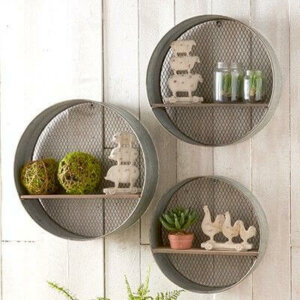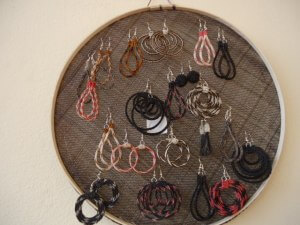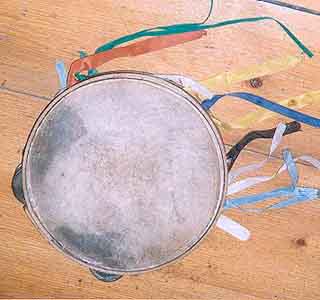Repairing and Reusing Old Sieves

In the interior design world, decorative ideas can come from any object. No matter what the original use was or what state the object is in, you can always find a solution to give it an original touch. For example, repairing and reusing old sieves can give them a new purpose.
We often have old utensils that we can’t use anymore. However, new ideas arise to change these aesthetics. You can reuse these objects to decorate your home. Of course, it’s important that you have good ideas and some imagination.
Sieves are objects that people use to separate materials of different thicknesses. They often consist of metal or wooden drums with a mesh base. The base allows for the separation of materials. These are generally like large strainers in the shape of circles.
Old sieves to hang earrings

This item actually has lots of interesting options. For example, you can use old sieves to hang earrings on the wall.
If the sieve is really old or overused, you might need to do some restoration. For example, you should polish a wood sieve or clean a metal one to remove rust. If it’s broken, you can use a new metal mesh to replace the old.
Next, hang the sieve on the wall. Then, you can arrange earrings in the holes in the mesh. For a more subtle, elegant touch, you can place them randomly or keep them symmetrical. In addition to earrings, you can also hang other jewelry.
This doesn’t take up any space and adds to your bedroom decoration.
5 decorative possibilities for old sieves

The shape of mesh lattice is useful for creating original resources for decoration. With some creativity, you can make all kinds of ornaments. Let’s look at 5 different ideas:
- The sieve itself can become an ornament. This can help create a rustic appearance. It can also bring a certain nostalgia and memories of the past.
- A mirror. Using only the wooden or metal drum, you can remove the mesh and place a circular mirror inside. However, it’s important that you take measurements carefully to make sure all the elements fit well.
- Photo frame. If you want to highlight a particular photograph, you can fit it into the mesh itself. The image then becomes a focal point.
- Flower arrangements. You can place a sieve with dried flowers on the dining room table or living room table. These create an elegant, sophisticated look.
- A lamp. Old sieves are generally circular, reminding us of a lampshade. However, this option requires you to find a way to connect the bulb and the cable.
Square sieves

You can also find square sieves. However, these aren’t as common since generally, sieves are circular. Square sieves can offer a lot of decorative options.
One option for square sieves is that you can use them as frames. However, another option is to use these to hang utensils or even as shelves. Consider using several different models of different shapes to create a more dynamic look.
In the world of decoration, it’s all about having imagination and creativity.
How to turn sieve into a musical instrument

Another idea to decorate your house is to turn a sieve into a musical instrument. For example, you can remove the metal mesh and add a membrane to transform it into a tambourine.
On the other hand, you can also put taut strings from one side to the other. This can create a percussion string instrument. In fact, this is one way to create a unique decorative musical instrument.
All cited sources were thoroughly reviewed by our team to ensure their quality, reliability, currency, and validity. The bibliography of this article was considered reliable and of academic or scientific accuracy.
- Lava Oliva, Rocío: Interiorismo, Vértice, 2008.
- Tranchefort, François-René: Los instrumentos musicales en el mundo, Alianza, 1985.